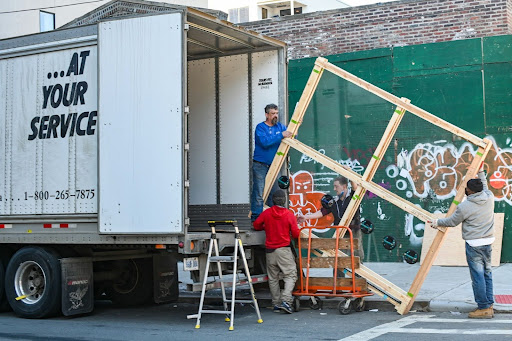
In the world of agencies, studios, and creative operations, deadlines are sacred. Whether you’re sending mockups, delivering a client’s print-ready artwork, or coordinating materials for a last-minute shoot, the logistics behind getting things where they need to go can make or break your reputation. Below, we explore tactics and tactical workflows to help agencies and studios stay calm (and professional) when a rush delivery is needed.
1. Map All “Known Unknowns” in Your Workflow
Before the panic sets in, build a mental map (or even a shared doc) of all the points in your creative-to-delivery pipeline that might turn into bottlenecks. Example checkpoints include:
- Final approval from the client
- File formatting and proofing
- Packaging or preparing physical assets
- Finding a courier / logistics provider
- Handoff or pickup scheduling
By visualizing potential friction zones in advance, your team can respond faster when one of those zones becomes active in “crunch mode.”
2. Designate a “Rapid Response” Role
Rather than everyone scrambling when a rush request arrives, designate one point person (or small team) who becomes the go-to for last-minute logistics. Their responsibilities might include:
- vetting local same‑day courier services
- prepping emergency packaging kits
- maintaining relationships with backup providers
- managing cost vs. speed tradeoffs
Having one person “own” the last-minute delivery process reduces confusion and churn.
3. Pre‑stage Emergency Packaging Materials
One of the most common delays is waiting for packaging, tubes, crates, or protective materials. Keep a small stock of:
- Sturdy flat mailers or envelopes
- Foam board, corrugated inserts, and corner protectors
- Bubble wrap, stretch wrap, and packing tape
- Labeling materials (fragile, do-not-bend, orientation)
When someone yells, “We need to get this out today!” you shouldn’t be scrambling for packing gear.
4. Embrace Same‑Day Messenger Networks
For local deliveries, same‑day couriers are no longer a fringe option. They’re becoming a core utility. These services have evolved thanks to logistics tech that optimizes routing, real-time tracking, and dynamic delivery networks.
By tapping into a trusted service, you offload the coordination burden and ensure reliability under tight timelines.
5. Tier Your Delivery Approach Based on Urgency and Fragility
Not all last-minute tasks are equal. Sort them into tiers so your response fits the risk:
Tier | Type of Item | Recommended Delivery Approach |
| A | Ultra time-sensitive, compact assets | Same‑day courier / messenger |
| B | High-value or fragile items | Same‑day courier with special handling + insurance |
| C | Less urgent bulk shipments | Overnight or express freight |
When you’re shipping creative pieces or delicate materials, there’s another wrinkle: safe packaging and handling. Here is a comprehensive walkthrough on how to ship artwork safely. Whether it’s framed pieces, flat prints, or rolled canvases. That guide offers tips on padding, crating, labeling, and picking the right courier.
By combining urgency planning with care best practices, you reduce the risk of damage or client complaints.
6. Use Tiered Partnerships (Primary + Backup)
No single courier can cover every scenario or locale reliably. Establish at least two or three vetted partners. One as your primary, one backup, and maybe one emergency “just-in-case” option. Keep their pricing, service zones, and constraints documented, so you can instantly switch if Plan A fails.
7. Build a SLAs & Accountability Framework
To ensure consistency, put simple service-level agreements (SLAs) in place internally. For instance:
- Delivery requests must be submitted at least X hours ahead (when possible)
- Rush requests trigger a cost‑premium approval workflow
- The “Rapid Response” person must confirm pickup within Y minutes
- Once dispatched, updates must be shared at 30‑minute intervals
Having these rules baked into your operations means even sudden requests don’t feel chaotic, and they follow a known protocol.
8. Leverage Smart Logistics Tools for Visibility
Real-time tracking, route optimization, and visibility dashboards are now table stakes in courier tech. Use these tools to:
- Monitor driver location and ETA
- Alert internal teams of delays
- Automatically route pickups or drop-offs
- Compare rates and times across couriers
These tools not only reduce surprise but can improve decision-making under pressure.
9. Run Post‑Mortems After Every Rush Delivery
Once a last-minute job is done, don’t skip the debrief:
- What went smoothly?
- Where did friction or delay creep in?
- Which vendor or process posed the greatest risk?
- How did the cost vs. value ratio perform?
Feed those lessons into your workflow map and continuously refine your contingency playbook.
10. Keep Client Expectations Transparent
Finally, especially when doing rush jobs, communicate clearly with your client. Whenever possible:
- Frame the deliverable as a “rush effort”
- Highlight potential risks (e.g. wear, damage, limited insurance)
- Offer alternative, slower options as backups
- Clarify who bears extra costs or liability
Managing expectations upfront shields both your team and the client from disappointment when surprises happen.
Bringing It All Together
Agencies and studios thrive on creativity and execution; however, logistics is the backbone that makes everything land. By pre-building infrastructure (packaging, SLAs, vetted couriers), designating ownership, and layering in smart technology, you can turn last-minute deliveries from crisis mode into a controlled system.
Whenever your team faces a rush deadline or needs to ship a delicate creative asset, you can spring into action confidently; by leveraging same-day courier networks and best practices for artwork shipping along the way.

